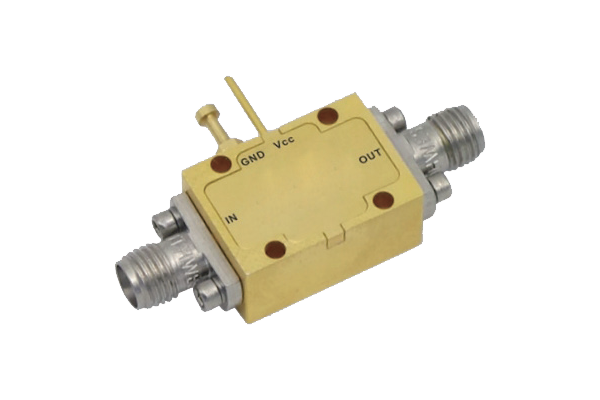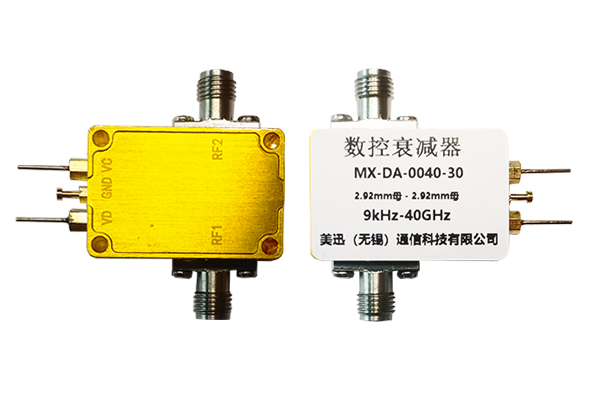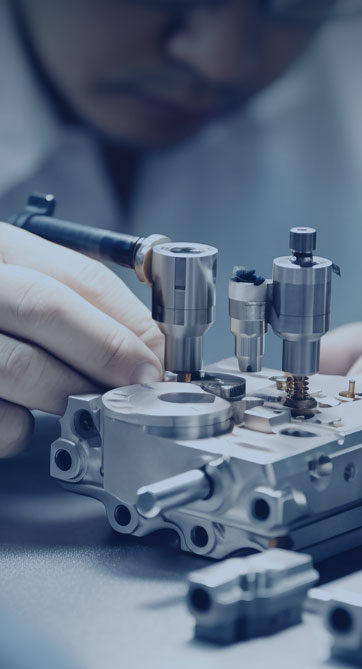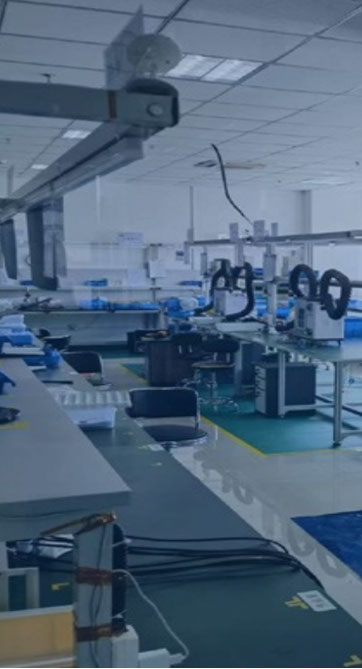
Pin diodes are established as major constituents in high-frequency electronics due to their natural device characteristics Their fast toggling behavior plus small capacitance and reduced insertion loss renders them apt for use in switch modulator and attenuator circuits. The underlying principle of PIN diode switching involves controlling charge flow through the junction by biasing the device. A change in bias voltage transforms the depletion-region width of the p–n junction, affecting conductance. Adjusting the bias enables PIN diodes to be switched for high-frequency operation while minimizing distortion
In systems that require precise timing and control PIN diodes are commonly integrated into sophisticated circuit topologies They may be applied in RF filtering arrangements to selectively pass or reject particular frequency bands. Their capability to tolerate high-power signals allows deployment in amplifiers power dividers and generator equipment. The development of compact efficient PIN diodes has increased their deployment in wireless communication and radar systems
Coaxial Switch Design and Performance Analysis
Coaxial switch development is multifaceted and calls for precise management of several parameters Switch performance is influenced by factors like the switch type operating frequency and insertion loss characteristics. Superior coaxial switch design seeks minimal insertion loss alongside strong isolation between ports
Performance assessment centers on return loss insertion loss and port isolation metrics. Such parameters are usually determined via simulations analytic models and physical experiments. Careful and accurate evaluation is vital to certify coaxial switch reliability in systems
- Simulations combined with analytic methods and practical experiments are standard for coaxial switch evaluation
- Temperature fluctuations impedance mismatch and manufacturing inconsistencies can strongly alter switch performance
- Recent advances emerging trends and novel developments in coaxial switch design focus on improving metrics while reducing size and power use
Strategies to Optimize LNA Performance
Achieving high LNA performance efficiency and gain is critical for exceptional signal fidelity in many use cases It requires selecting suitable transistors setting optimal bias conditions and choosing the right topology. Effective LNA designs minimize internal noise and maximize clean signal gain with little distortion. Modeling simulation and analysis tools play a central role in evaluating the impact of design decisions on noise. Achieving a reduced Noise Figure demonstrates the amplifier’s effectiveness in preserving signal amid internal noise
- Device choice focusing on minimal intrinsic noise characteristics is paramount
- Adopting proper optimal biasing is essential to reduce noise creation in devices
- Topology of the circuit strongly affects total noise performance
Using impedance matching noise cancelling structures and feedback control optimizes LNA function
PIN Diode Based RF Switching and Routing

PIN diode switching mechanisms deliver versatile and efficient RF path routing across designs They can be switched very fast to allow flexible dynamic routing of RF signals. PIN diodes’ low insertion loss and good isolation preserve signal quality through switching events. They are applied in antenna selection circuits duplexers and phased array antenna systems
Control voltages alter the diode resistance which in turn dictates switching operation. In the open or deactivated condition the device offers large resistance that prevents signal passage. The application of a positive bias reduces device resistance and permits RF passage
- Additionally PIN diode switches yield high switching speed low power draw and compact footprint
PIN diode switch networks can be configured in multiple architectures and designs to support complex routing tasks. By interconnecting multiple switches designers can build dynamic switching matrices for flexible path configuration
Coaxial Microwave Switch Assessment and Efficacy

Extensive testing and evaluation are important to ensure coaxial microwave switches operate optimally in complex systems. Various performance drivers like insertion reflection transmission loss isolation switching speed and bandwidth influence switch behavior. A comprehensive evaluation process involves measuring these parameters under a variety of operating environmental and test conditions
- Further the testing should consider reliability robustness durability and capability to withstand harsh environmental factors
- Finally the result of robust evaluation gives key valuable essential data for choosing designing and optimizing switches to meet specific requirements
Review of Techniques to Reduce Noise in Low Noise Amplifiers
Low noise amplifier circuits are central to RF systems for enhancing weak signals and limiting internal noise. This review article offers an in-depth examination analysis and overview of LNA noise reduction approaches. We explore investigate and discuss key noise sources including thermal shot and flicker noise. We further analyze noise matching feedback topologies and bias optimization strategies to suppress noise. This review spotlights recent developments like new materials and inventive circuit designs that improve noise figures. By providing insight into noise minimization principles and practices the review supports researchers and engineers working on high performance RF systems
PIN Diode Applications in High Speed Switches

PIN diodes possess remarkable unique and exceptional traits that fit them well for high speed switching systems Reduced capacitance and low resistance yield fast switching performance suitable for strict timing control. Their proportional voltage response enables controlled amplitude modulation and reliable switching behavior. Such versatility flexibility and adaptability renders them appropriate suitable and applicable for diverse high speed scenarios Applications span optical communication systems microwave circuits and signal processing hardware and devices
Coaxial Switch Integration and IC Switching Technology
Coaxial switch IC integration provides critical improvements in signal routing processing and handling inside electronic systems circuits and devices. The ICs are designed to direct manage and control coaxial signal flow offering high frequency operation and reduced propagation insertion latency. IC miniaturization supports compact efficient reliable and robust designs appropriate for dense interfacing integration and connectivity contexts
- With careful meticulous and rigorous deployment of these approaches developers can accomplish LNAs with outstanding noise performance enabling trustworthy sensitive electronics By meticulously carefully and rigorously adopting these practices designers can deliver LNAs with excellent noise performance supporting reliable sensitive systems Through careful coaxial switch meticulous and rigorous application of such methods engineers can design LNAs with top tier noise performance enabling dependable sensitive systems By meticulously carefully and rigorously applying these methods developers can produce LNAs with superior noise performance enabling sensitive reliable electronics
- Use scenarios include telecommunications data communication systems and wireless networks
- Integrated coaxial switches are valuable in aerospace defense and industrial automation use cases
- Consumer electronics audio video equipment and test and measurement systems also use IC coaxial switch technology
Considerations for LNA Design at Millimeter Wave Frequencies

LNA design at millimeter wave frequencies faces special challenges due to higher signal attenuation and amplified noise impacts. At these high bands parasitic capacitances and inductances dominate and require careful layout and component selection. Minimizing mismatch while maximizing gain is critical essential and important for mmWave LNA operation. Devices such as HEMTs GaAs MESFETs and InP HBTs are important selections to meet low noise figure goals at mmWave. Furthermore the design and optimization of matching networks is crucial to securing efficient power transfer and impedance match. Accounting for package parasitics is important since they can significantly affect LNA performance at mmWave. Employing low loss transmission lines and considered ground plane layouts is essential necessary and important to reduce reflections and preserve bandwidth
Characterize and Model PIN Diodes for RF Switching Applications
PIN diodes are critical components elements and parts in many RF switching applications systems and contexts. Exact detailed and accurate characterization of these devices is essential for the design development and optimization of reliable high performance circuits. That entails analyzing evaluating and examining electrical voltage and current characteristics such as resistance impedance and conductance. Characterization also covers frequency response bandwidth tuning capabilities and switching speed latency or response time
Moreover additionally the crafting of accurate models simulations and representations for PIN diodes is essential crucial and vital for predicting RF behavior. Several diverse modeling approaches exist such as lumped element distributed element and SPICE models. Choosing the right model simulation or representation depends on specific detailed particular application requirements and desired required expected accuracy
Sophisticated Advanced Methods for Minimal Noise Amplifiers
Designing low noise amplifiers necessitates detailed attention to topology and component choice to reach best noise figures. Emerging novel semiconductor developments have allowed innovative groundbreaking sophisticated design strategies that cut noise considerably.
These techniques often involve employing utilizing and implementing wideband matching networks adopting low-noise high intrinsic gain transistors and optimizing biasing schemes strategies or approaches. Additionally advanced packaging solutions and thermal management approaches are key to cutting noise contributions from external factors. Through careful meticulous and rigorous implementation of these approaches engineers can achieve LNAs with exceptional noise performance supporting sensitive reliable systems
